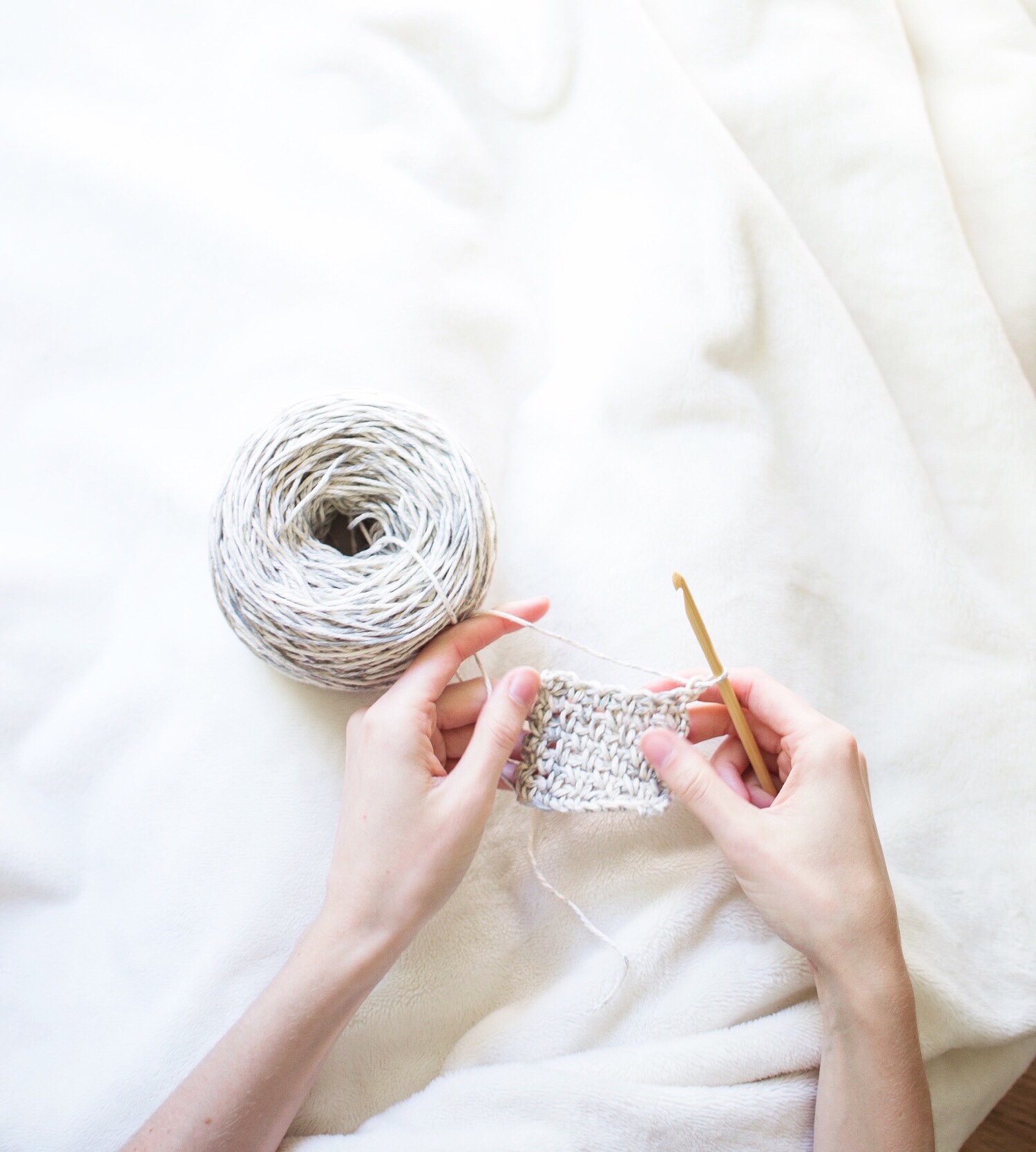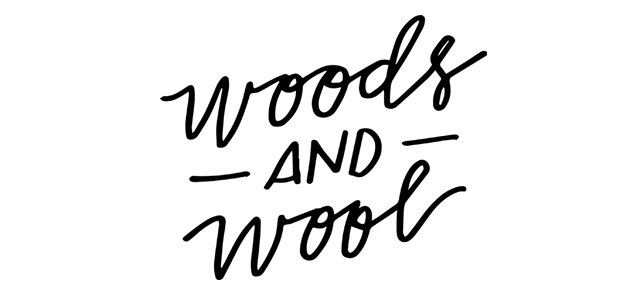
This is our second post in a four-part series about patterns! If you missed the first post of the series about pattern originality, you can check it out here!
Let me start by saying – I love pattern writing. I’ve written five patterns now and it has brought me more joy than I ever imagined. I love the challenge and the process of designing something all your own and it’s even cooler when you get to share it with the world. My background is in technical communication, so I love the technical aspect of writing patterns. That’s one thing we should clarify right off the bat – pattern writing is not creative writing, it’s technical writing. This means we are breaking down complex information in a clear and concise manner. It’s instructional and the goal is to get the reader from point A to point B with ease. Now of course the design aspect is creative, but sitting down to get your pattern on paper is a different story.
Let’s get to the good stuff – Here are my answers to some of the most frequently asked questions I get and my best tips for pattern writing!
1. Make Lists
Keep a running list of ALL your pattern ideas. That way, when you’re ready to sit down and start something new, you’ll have a list of ideas at your fingertips. It also keeps you from forgetting an amazing idea that popped into your head!
2. How do I start writing patterns?
This probably isn’t the answer you were looking for… but you just do it! There’s no secret to pattern writing other than taking the initiative to act on your vision, figure out how to make it, and put in the work.
3. What comes first – the pattern or the product?
Both! It really just depends on the designer and the pattern, but you can either start a design by picking up your yarn and trying something new or by trying to write or draw out the design on paper. I usually start by drawing a stitch diagram of my idea, then picking up my yarn, and writing each step of the pattern as I go.
4. Write down every step of the pattern.
When I said I write down each step of my pattern as I go, I meant every. single. step. Clarify whether your chain 1 counts as a stitch or if it’s a turning chain. Write down if you are turning after each row. Jot down any notes to yourself that could possibly be helpful and don’t be afraid if your notes aren’t perfect! Mine are often scribbled notes in different pen colors, with lots of arrows, circles, and drawings to get every detail on paper.
5. Do your research & know your stuff.
There’s no way around this one:You need to know your stuff to write a pattern. This means do your research! One of my favorite resources is the Craft Yarn Council. They have a ton of information and nearly everything you’ll need to know, like what standard sizes are, standard yarn weights, and ALL the knit and crochet abbreviations you can think of. I also love their article of Designer Pitfalls, which you’ll definitely want to avoid when designing your own pattern. You don’t have to be the best knitter or crocheter in the world to write a pattern, but you do need to know your pattern inside and out.
6. What do I need to put in a pattern? – Gauges, Diagrams & Photos
Your pattern needs to have a gauge. It’s critical to the integrity of your pattern because it is the key to making sure everyone using your pattern ends up with the correct sizing. Everyone’s tension is slightly different and a gauge allows people to adjust for that. Without a gauge, you will have people with a finished product that doesn’t fit. Including a gauge is non-negotiable – every pattern needs this. End of story.
When it comes to diagrams, I am a huge fan! Not every pattern needs a diagram, but for some it can make all the difference. It can make a complicated pattern simple to understand at a glance. Don’t be intimidated by the idea of creating a diagram! I use a free site called Stitch Fiddle to create diagrams for my patterns.
Now photos are a different story – I like to think of patterns as a recipe, not a cooking class. With a recipe, you expect the cook to have basic knowledge of cooking, kitchen utensils, and so on. With a cooking class, you would be provided with a step-by-step instruction where you don’t need any prior knowledge. For a knit or crochet pattern, you do not have to teach someone how to knit or how to crochet – save that for YouTube and lessons at local yarn stores. However, if your pattern has special stitches or techniques, you’ll want to provide visuals with either illustrations or photos.
7. Do the math.
Math is your best friend when it comes to pattern designing. You don’t need to be a mathematician, but once you tackle the basics of pattern math – you’ll be good to go. Math is the secret to ensuring your stitch counts are correct whether you increase, decrease, or are using complicated stitch patterns. It is also your best friend when it comes to creating multiple sizes for your design.
8. Making mistakes
Spoiler alert: You’re going to make mistakes… and probably a lot of them. Be prepared to get stuck, but more importantly – be ready to problem solve. Mistakes are part of the process, embrace them and don’t be afraid to tweak or even rework your design. Sometimes this means you’ll have to set down your project for a few days to give yourself some space to figure it out. Whatever you do, don’t give up. Every designer makes mistakes when they are working through the pattern writing process!
9. Discouragement, Frustration, & Fear
Let’s be real – pattern writing is NOT easy. In my last post, I addressed one of the fears that has almost held me back from moving forward with designs but the truth is there’s even more to the down side of pattern writing. It’s not uncommon for me to feel some type of self-doubt, discouragement, and frustration when I am working on a new design. But it’s okay. My amazing friend Chantal over at Knitatude did a an amazing blog post on the Dark Side of Pattern Writing – and I highly recommend giving this post a read to see the real, raw side of what pattern writing is.
10. The best $10 you can spend… is on a scale!
A kitchen scale will make your life so much easier (mine was like $10 from Amazon and is perfect for what I use it for). A scale will allow you to weigh your yarn or your project to calculate the yardage used. It sounds like a lot of math, but trust me – it’s so simple! When writing a pattern, it is extremely helpful to get your yardage down exactly so that you can provide that information in your pattern. This will allow people to know exactly how much yarn to buy and substitute yarn if needed.
Next week we’ll talk about pattern testing!
Some of the links in this post may be affiliate links, meaning, at no additional cost to you, I will earn a commission if you click through and make a purchase.

What a helpful post! I share the same self-doubt and fear with almost every project. And just like you, I LOVE my scale. What a lifesaver!
Aww thank you so much!!
I love this series! I have been knitting a long time and often make up my own patterns. I have always wanted to try to write a pattern but let my own fear hold me back. I just released my first one and loved to whole process. Even the frogging. Your article gave the realistic warnings but was also encouraging. A great balance!